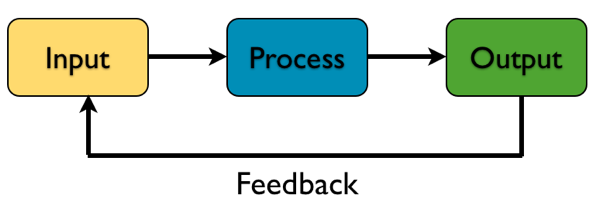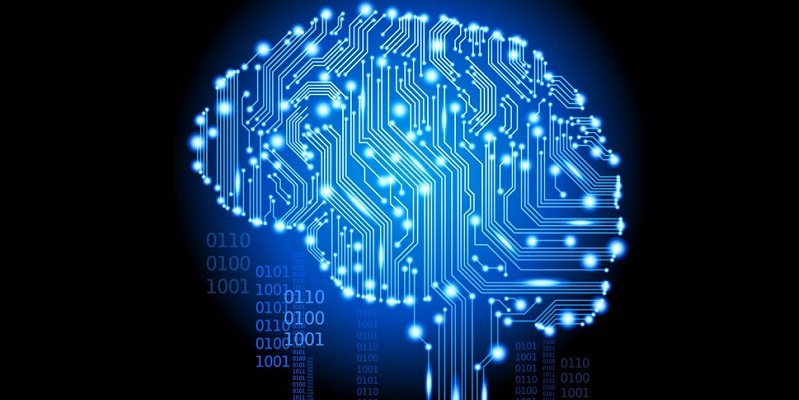|
If you didn’t read my article on intelligence, please do so before reading this. It will make a lot more sense.
I tend to think about and relate most of what I read to education. The ideas of information, computation, learning, and intelligence are no different. I immediately began asking myself how my understandings framed my thinking about education. After some reflection, the impact is straightforward. Education is a function that is used for computation. We take inputs and produce outputs, which hopefully reflect our pre-selected goals. As we improve the function of education, we are learning to accomplish our goals better. Some questions that immediately spring to mind are, “What are we aiming to produce? What are our inputs? Is there or should there be only one function of education?” I think the answers will be different for different groups of people, but believe the method will be similar across the board. For example, I work at a large, private, international school in a wealthy, highly developed nation. If I were planning the vision, mission, and overall strategy of the school, I’d collect as much information about what the customers of the school wanted in terms of output for their money. Are they paying for a nice facility, like a day spa for their children? Are they paying for their children to be happy? To network socially for future employment and investment opportunities or simply to learn academic skills and knowledge? Do they want specific access to universities or just well paying jobs, regardless of college education? Is it important that their children become altruistic adult citizens? It would be possible to receive data on all of these answers and also to have the parents go further in weighting them by assigning percentages from a total of 100. For instance, they may be hoping that roughly 30% of their spending is going to simply producing happy children, 20% for access to networks of various types, 25% to beautiful and up-to-date facilities, and 25% to academic skills and knowledge. This would give a clear idea about the outputs or products of the school’s function the parents are hoping for and then it’s a matter of improving the computation of the inputs (students, resources, curriculum, etc.) to those outputs over time. That would be the definition of a “learning school” and could be checked yearly from surveys to parents about how well these weightings are being met over time. If parents report via surveys after the first year that they believe the school is actually devoting 80% of school time to academic skills and knowledge, instead of the hypothetical 25% above, the school would know they have to drastically shift their emphasis in the next year. They have seriously neglected the production of happy children, social networks, and aesthetic facilities. Naturally, it might take some time in operationalizing these metrics and getting information with high validity, but that is part of the learning process that improves the function over time. This does two things, it makes the literal function of the school exceedingly clear and makes it much easier to measure success. A byproduct of this approach is that it could very well mean de-emphasizing academics quite heavily. If parents mostly care about the happiness of their children, for example a weight of over 50%, then the school would feel liberated to focus much less on particular subjects and academic metrics like grades and instead to direct many more resources into programs that foster aspects of positive psychology, like positive emotions, engagement, relationships with others, meaning, and accomplishment. On the other hand, it would also make it easier to focus nearly 100% of resources to academics if the parents are clearly communicating that that is what they want. This would liberate the school from wasting time and energy on programs related to sports or the arts. Furthermore, the school may have heterogeneous groups in the community that each expect different functions of the school. This would make it easier to clearly offer multiple pathways for the inputs of students to the outputs desired. This last point would seem to imply larger schools, as Asbury and Plomin recommend in their wonderful book G Is for Genes, due to the advantage of economies of scale when it comes to running multiple programs, pathways, and options. Smaller schools would simply have too difficult a time offering multiple functions of school for parents to choose from. An alternative would simply be smaller schools with single, specialized functions. Is any of this revolutionary? I don’t think so. However, it is much clearer than most people I’ve read or listened to in education communicate. If we want specific goals to be achieved, we have to act intelligently. This means improving the computation of inputs into outputs over time, i.e. learning. That entails clearly describing what outcomes or goal states we want to achieve, which may be multidimensional and require weightings of different priorities, so that we can assign our inputs wisely in the transformation processing. Will everyone agree on what the goal should be? Of course not. I’ve written about what I think education’s goal should be, described what it might look like, offered a possible syllabus of books to help create it, and also written more generally why I think good teachers don’t exist. Whether or not good teachers and schools exist objectively, intelligent ones certainly do and using the above language in precise ways can help us communicate more clearly and elevate all of our intelligences for whichever goals we aim at.
1 Comment
I’ve been much obsessed by related questions lately. What are information, memory, and computation? What are learning and intelligence?
One can answer these questions in either direction, starting with information and going forward to intelligence, or starting with intelligence and going backwards to information. I typically find it easier to explain from the bottom up, so I’ll start with information. Cesar Hidalgo, Director of MIT’s Media Lab and physicist, defines information as physical order. When energy flows through systems of matter, they have the ability to self-organize. We can use the image of a whirlpool in bathtub to help us understand this. Water sitting in a tub is matter with little energy flowing through it. When we unplug a stopper, energy flows out of the tub and the water spontaneously organizes into a whirlpool. This physical order is information, so the whirlpool is information. The problem with fluids is that they can’t store information. As soon as the energy stops flowing through the tub, the whirlpool dissipates and there is no memory of it. This brings us to the question of what is memory? It is information that is captured in a solid state. If we were able to freeze the whirlpool into ice, that would work as a memory device. So memory is just the crystallization of information in solid states. Once we have information stored, we can begin using it to compute. Computation is the transformation of inputs into new output via a function. As Max Tegmark, another MIT physicist puts it, computation is the transformation of one memory state into another memory state. Tegmark continues by explaining that if computation is all about the transformation of information from one memory state into another, then learning is simply the ability to improve the function used in computation. Learning is simply getting better at computation. All of these allow us to understand what intelligence actually is. Intelligence is the ability to accomplish complex goals. It is the ability to use information, memory, computation, and learning in order to arrive at desired outcomes. This has two consequences; intelligence is value neutral and it makes little sense to quantify it in a single metric like IQ. The first consequence is self-evident. We can select goals that are extremely benevolent or extraordinarily evil. World peace would be a benevolent goal. The “Final Solution” would be an evil goal. Both require massive intelligence in order to pull off as they are incredibly complex goals. The second consequence is evident once we begin thinking of intelligence beyond the individual as the focal point. It makes little sense to think of intelligence as just an individual trait anymore. The ability to compute information to accomplish goals is better done in networks once the goal becomes complex enough. This is why two cognitive scientists, Steven Sloman and Philip Fernbach, believe intelligence is better measured at the collective level. Instead of measuring g, or general intelligence in an individual, Sloman and Fernbach have advocated that c, or collective intelligence, is a better method. This measure can still be applied to an individual in a team, but it attempts to measure how difficult it is to replace a person within a team. If a person contributes highly to a group in accomplishing a goal, regardless of their g, then they would have a high c. Cognitive scientists have in fact generated a valid measure of c and Sloman and Fernbach believe it could become more useful in general. The more general problem with intelligence, whether measured in humans with g or c, is that that there is nothing preventing machines from doing it better over time. Tegmark asks readers to think of a landscape of human competence, with lowlands, foothills, and mountains. Computers have been slowly advancing and their performance is like water flooding the landscape, forcing humans to retreat, first into the foothills, but eventually further and further up into the mountains. As McAfee and Brynjolfsson point out in their newest book, Machine, Platform, Crowd, machines are already a better replacement for human minds on many things we value, such as judicial sentencing and mortgage and business loan processing. Machines do fail at some tasks, namely those that we haven’t bothered to model or figured out how to model with functions. However, machines mostly perform the same or better than humans across the board on tasks which they can model by computing inputs to desired outputs. Those are my current understandings of information, memory, computation, learning, and intelligence. Information is physical order that arises from energy flowing through matter and can be stored in solid states called memory. This information can act as inputs to functions which compute them into outputs. Learning is the act of tweaking the function over time for improved outputs. Finally, whenever we are using our computational abilities to achieve specific outputs, we are acting intelligently, which often requires networks larger than the individual for complex goals. What fascinates me about these questions is that they force us to very genuinely and openly ask ourselves what our collective aims and goals for society are. When machines can use intelligence to extract information from crowds using massive platforms to compute and learn, what do we hope and wish for those humans lost in the flood? What goals are worth using intelligence to accomplish? What information state should we be aiming at and will it be better for all or just a few? |
Archives
November 2017
|


 RSS Feed
RSS Feed